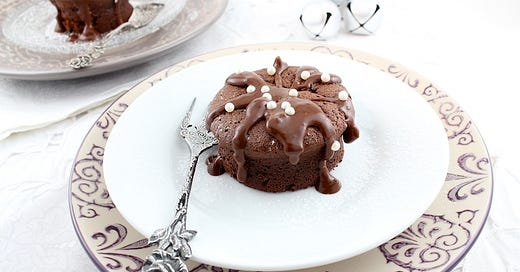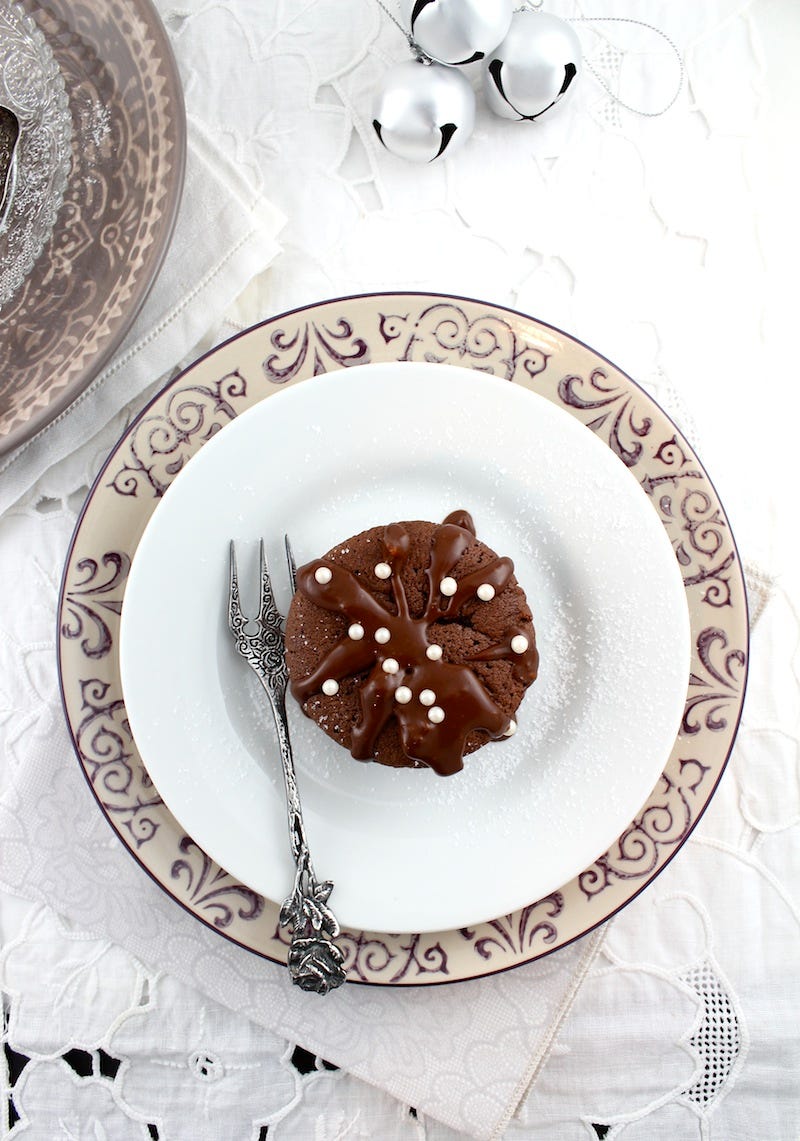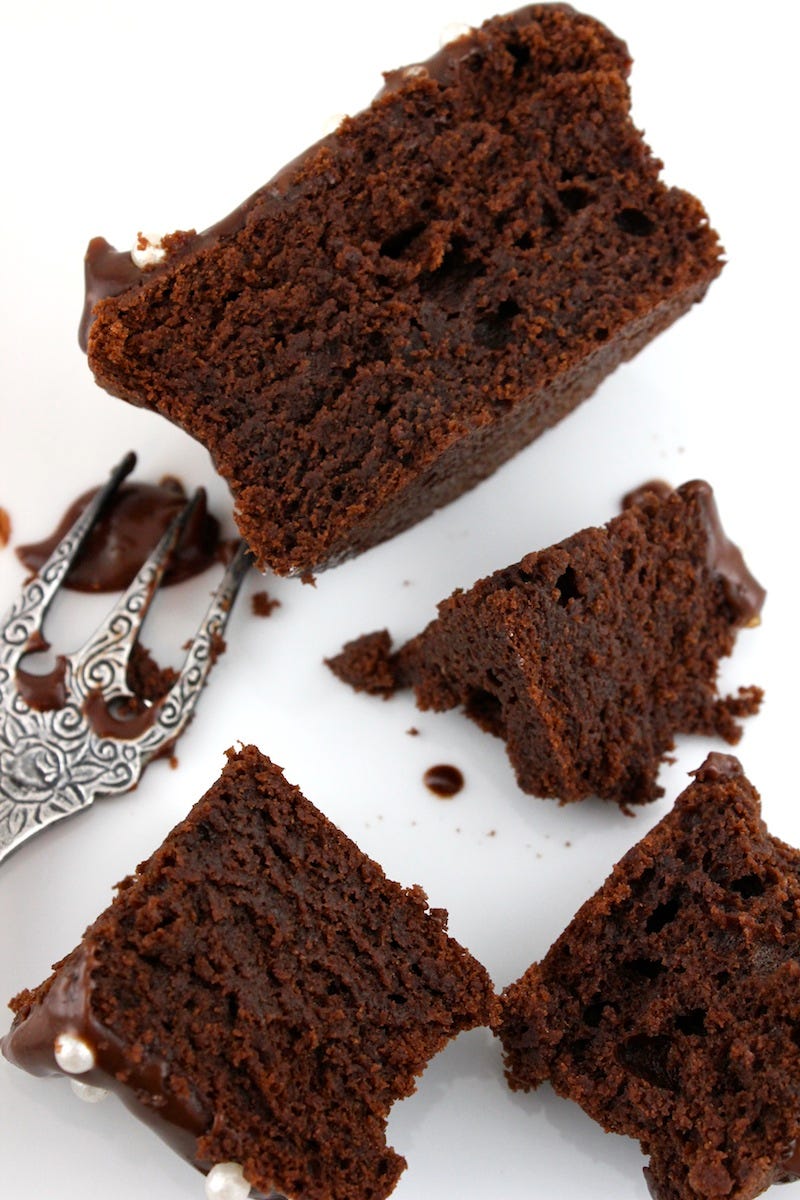Chestnuts are delicacies for princes and a lusty and masculine food for rusticks, and able to make women well-complexioned. – John Evelyn
There once was an old priest - a bishop to be exact - named Valentin who lived in the Italian town of Terni and who had a beautiful garden full of flowers. This was around the middle of the third century. Each young man or young woman who passed by, stopping to admire the garden, would receive a flower and a bit of sage advice from the Bishop. He began secretly marrying those who wished. Soon, couples from all over Italy would find their way to his garden hoping to be blessed by the man; so many couples came to him, he no longer had time to just stroll through and enjoy his own garden, so he selected a single day in the year which he dedicated to performing a common nuptial blessing. This is how the tradition of Saint Valentine was born, the festival celebrating love.
This sugarcoated, romantic version is recounted in the 1950 Valentine’s Day issue of ELLE magazine. But it seems to have passed over a few of the dirty details of what is said to be the true story of this fête. And the man behind the celebration.
The Roman Emperor Claudius II “Le Gothique”, who reigned from 268 to 270, forbade his soldiers to marry, imposing this rule to ensure that his men would not be distracted from their military convictions and determination to fight. Marriage, he thought, would weaken the men. Some of the soldiers, in the face of this interdiction, snuck off to find Valentin de Terni to celebrate their union in secret. When the emperor learned of this venture, he had the priest arrested. While in prison, Valentin was entrusted to the care of the prefect Asterius, whose daughter Julia was blind. Legend has it that Valentin fell so deeply in love with Julia that her vision was restored. Overwhelmed by this miracle, Asterius and his family converted to Christianity. Claudius, so outraged by all of this, condemned Valentin to death. The poor priest was executed on February 14, 269 (or 271). It is also said that Valentin addressed a billet-doux, a love letter, to Julia in his final moments, signed "Your Valentin”.
In 1496, Pope Alexandre VI rewarded Valentin’s acts of kindness and defiance - motivated by love - by bestowing on the priest a sainthood and Saint Valentin(e) became the Patron Saint of love, affianced couples, and happy marriages…as well as the Patron Saint protecting one against fainting, the plague, and epilepsy.
But while the Church embraced this saintly man and his actions, his sainthood didn’t always turn out well for the Church. By the Middle Ages, the valentinage, celebrated on what was then dubbed Valentine’s Day, had become a custom in which wives were granted “a day of erotic freedom” - in other words, married women could have sexual relations outside of marriage, either with a lover or with a “valentine” chosen by lot. Neither the clergy nor the husbands were very happy about this tradition and both began to fight against it.
Slowly, the tradition evolved; in 1626, the Bishop of Bellay spoke of valentinage as a day in which a married woman was allowed to be escorted around publicly with her lover or anyone could freely be with another man or woman. By the 19th century, it had become the only day in the year in which young men and young women could choose the person they wanted to marry: “In small towns and in the countryside,” it was written in Le Messager des Fiancés : Gazette des Familles, January 1852, “a young man who has chosen his fiancée gives her the title of Valentine, takes on that of Valentin himself, and accompanies her to all festivities, balls, weddings and so on. Other young men take pleasure in solemnly proclaiming Valentina their lovers and future spouses, in order to obtain small gifts; public assent thus adds new force to the individual choice, and Valentinism rarely gives rise to abuse.”
“Valentinage, which must be considered as the true qualification of the custom that the ecclesiastical authority wanted to proscribe, while the expressions Valentins and Valentines could only apply to people of both sexes who were subjected to the yoke of a custom that was attractive for some, tyrannical for others.” (Bulletin du Bibliophile, January 1, 1847)
So, for some, Valentine’s Day worked out, for others, not so much. Like most of us in grade school.
Valentine’s Day, falling on the first Sunday of Lent, became la fête des amoureux, des jeunes mariés, the celebration of lovers and the newly married. Young couples, according to the Bulletin de la Société Philomatique Vosgienne on 1 January 1890, “would arrive at City Hall where they would be married”, this marriage followed by a ball and a dinner in front of a huge bonfire. The newly married couples would have the right to present themselves on the balcony and declare themselves Valentines to all who were gathered. “In the week following this event, les Valentins would have to present a bouquet of flowers to their Valentines, and les Valentines would be required to offer a ball or danse to their Valentins. If one or the other failed to do so, straw would be set on fire in front of their house.”
Étienne de Jouy penned L'Hermite en Province, Observations on French Customs and Habits at the Beginning of the 19th Century and wrote “Two of my daughters are already valentines; they have secured the hearts and wishes of two good boys, in whom I hope to find support for my old age; the little gifts, called valentines, arrive every day at the farm.” No longer a day of erotic ardor, secret engagements or marriages, or even choosing the name of one’s lover and future spouse from a hat (État Présent de l’Angleterre sous le Roi Guillaume III by Edward Chamberlayne 1671 translated into French), rather an innocent custom in which young women could choose “good boys” with whom to marry.
Over the course of the 20th century, the religious identity of this tradition diminished until Valentine's Day became totally pagan. In 1969, Pope Paul VI withdrew the feast from the Roman liturgical calendar. Since then, it has become the rampantly commercial period of the year in which shop windows are filled with hearts and roses, confectioners create special, overpriced gift boxes of chocolates, and it is impossible to get a restaurant reservation.
No, all kidding aside….
While Saint Valentine’s Day has never really been considered a French day of celebration, more one recognized as English or American, it seems to have been a Frenchman, Charles, the Duke of Orléans, who set the tradition of writing love poems on Valentine’s Day. Or so it is said. Legend has Charles writing the first in the 15th century while imprisoned in England during the 100 Years War, a captive in London Tower, for his wife. Whether he did write the first Valentine’s Day card or not, he did write extensively on the topic; about 14 of poems were laments and love around the celebration of this day of lovers, as he languished far from his own, or upon his return to France after the death of his beloved. “I’m already wearied by love, my very sweet Valentine” - “On this Valentine's Day / Each one must choose his match / Lovers, shall I remain unparalleled / Without returning to your prize?” - “My very gentle Valentine, Alas, for me you were born too soon, As I was born too late for you! May God forgive my jailer Who has kept me from you this entire year. I am sick without your love, my dear, My very gentle Valentine.” - “Let men and women of Love's party Choose their St. Valentine this year! I remain alone, comfort stolen from me On the hard bed of painful thought.” Woe is me! Poor Charles, the brokenhearted, and his Valentine’s Day love poems.
The French don’t really celebrate Valentine’s Day. Like Halloween before it, “they” tried to bring this American-Anglo holiday to France in order to commercialize it, but its popularity was fairly short lived. It is just not a French holiday, at heart. And personally, I have never understood why declaring our love must be reserved to a single day in the calendar year. But I do love baking, and Valentine’s Day means chocolate.
Look, there's no metaphysics on earth like chocolates. - Fernando Pessoa
Chocolate Chestnut Cloud Cake with chocolate orange ganache
I make various size cakes, preparing my medium-sized nonstick fluted tube pan and my individual cupcake pan. Just keep an eye on your cakes while baking and adjust baking time accordingly.
5.3 ounces (150 grams) dark chocolate 70% cacao, broken into pieces
9 tablespoons (135 grams) unsalted butter
3 rounded/heaping tablespoons (150 grams) chestnut cream (crème de marrons Clément Faugier)
3 tablespoons (30 grams) flour
3 tablespoons (20 grams) unsweetened cocoa powder
5 large eggs, separated
½ cup (100 grams) granulated sugar
1 tablespoon Grand Marnier or Cointreau
Orange Chocolate Ganache (this recipe can easily be halved):
3.5 ounces (100 grams) Lindt Excellence Orange Intense or equivalent orange-scented dark chocolate
½ cup (125 ml) heavy cream
Or confectioner’s/powdered sugar and unsweetened cocoa powder for dusting
Preheat the oven to 325-335°F (170°C). Butter and flour either a medium-sized Bundt or fluted tube pan or about 18 – 20 individual cupcake or mini-Bundt molds. Or a combination of shapes and sizes.
Place the broken chocolate and the butter in a medium-to-large-sized Pyrex or heatproof bowl. Melt gently either in a bain-marie, over a pot of gently simmering water or in the microwave; barely 1 minute on high heat in the microwave should melt the butter completely and melt the chocolate more than partially, but not completely. Remove from the heat/microwave and stir or whisk until the chocolate is completely melted and the mixture well blended and smooth. Add the 3 heaping tablespoons of chestnut cream/crème de marrons and whisk to blend.
Measure the flour and the cocoa powder together into a small bowl and then sift the two onto the chocolate/butter/chestnut mixture. Whisk to blend until smooth. Whisk in the Grand Marnier or Cointreau, if using.
Separate the eggs, placing the 5 clean whites into a large, very clean bowl ideal for whipping meringue – I prefer plastic. If you like, add a drop of lemon juice and a few grains of salt to help stabilize the whites. Using an electric mixer, beat the whites for 30 seconds on low speed then increase speed to high; beat for about 2 minutes until the whites are no longer foamy, are white and opaque and soft peaks hold. Begin gradually beating in the sugar, about a teaspoon at a time while continuing to beat on high speed. This should take another couple of minutes. Continue to beat until all of the sugar is incorporated and the meringue is very thick. The entire process should take about 5 minutes.
Beat the egg yolks into the meringue one at a time, beating on medium or high speed, beating in each yolk just to combine.
Using a spatula, fold the yolky meringue into the chocolate batter, adding and folding in a quarter of the meringue at a time. Do not overmix.
Spoon into the molds and bake for not more than 30 minutes (if making one large cake, this could bake up to double the time depending on the pan and the oven). When done, the top should be set, dull (no longer shiny) and lightly crispy. The cake should spring back when gently pressed and a tester inserted in the cake should come out clean.
Remove from the oven and allow to cool in the pan until completely cool before gently loosening and turning out.
Prepare the ganache while waiting for the cakes to cool by chopping the chocolate and placing in a heatproof bowl. Bring the cream just to the boil and pour over the chopped chocolate. Stir until the chocolate is completely melted and the ganache well blended, smooth, and creamy. Leave to thicken at room temperature, stirring occasionally, until drizzling consistency. If you like, allow to get very thick and then thin with a bit of Grand Marnier or Cointreau.
Spoon onto individual cakes or slices as serving. Top with sugar pearls or other pretty sugar decorations.
Thank you for reading and subscribing to Life’s a Feast by Jamie Schler. Please leave a comment, like and share the post…these are all simple ways you can support my writing and help build this very cool community. Let me know you are here and what you think. You are so very appreciated.










I loathe Valentine's Day for many reasons, but I love the flavor of chestnuts and happen to have an unopened can of purée impulsively purchased at E. Leclerc on one of our hotel runs.
18 eggs $3.54